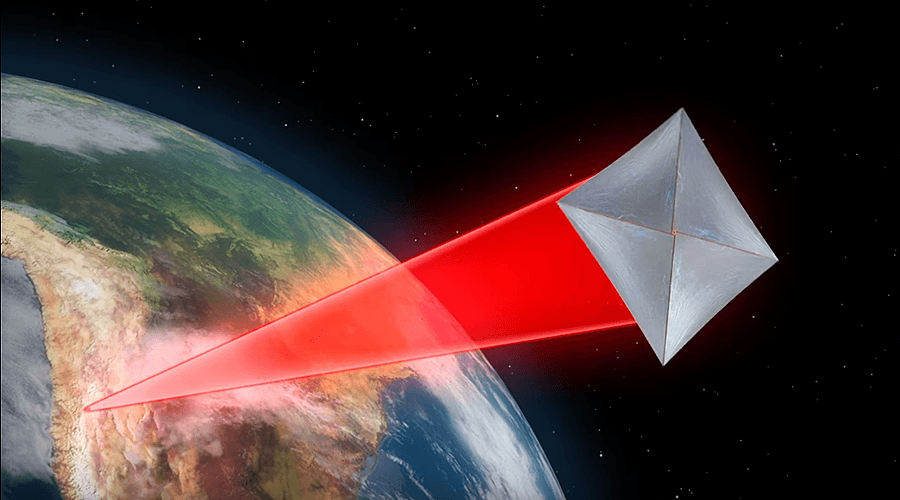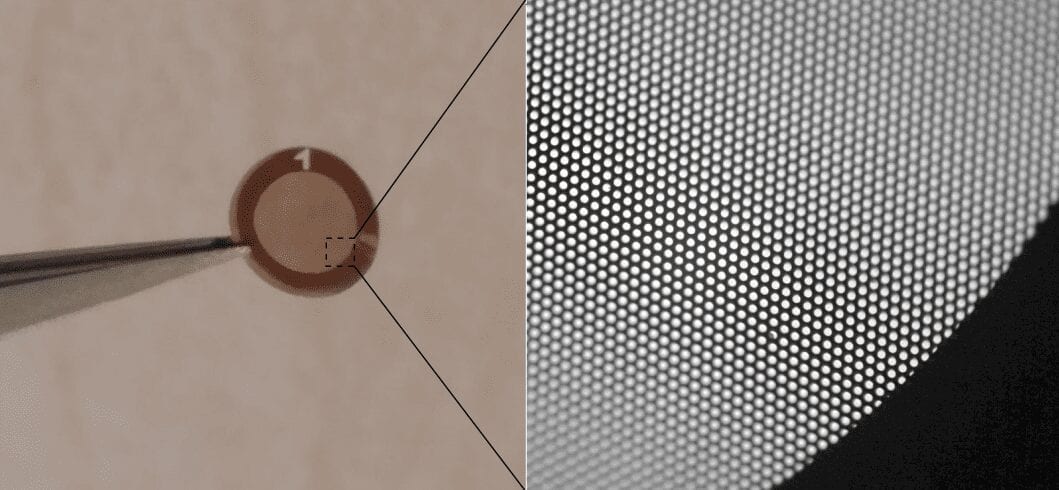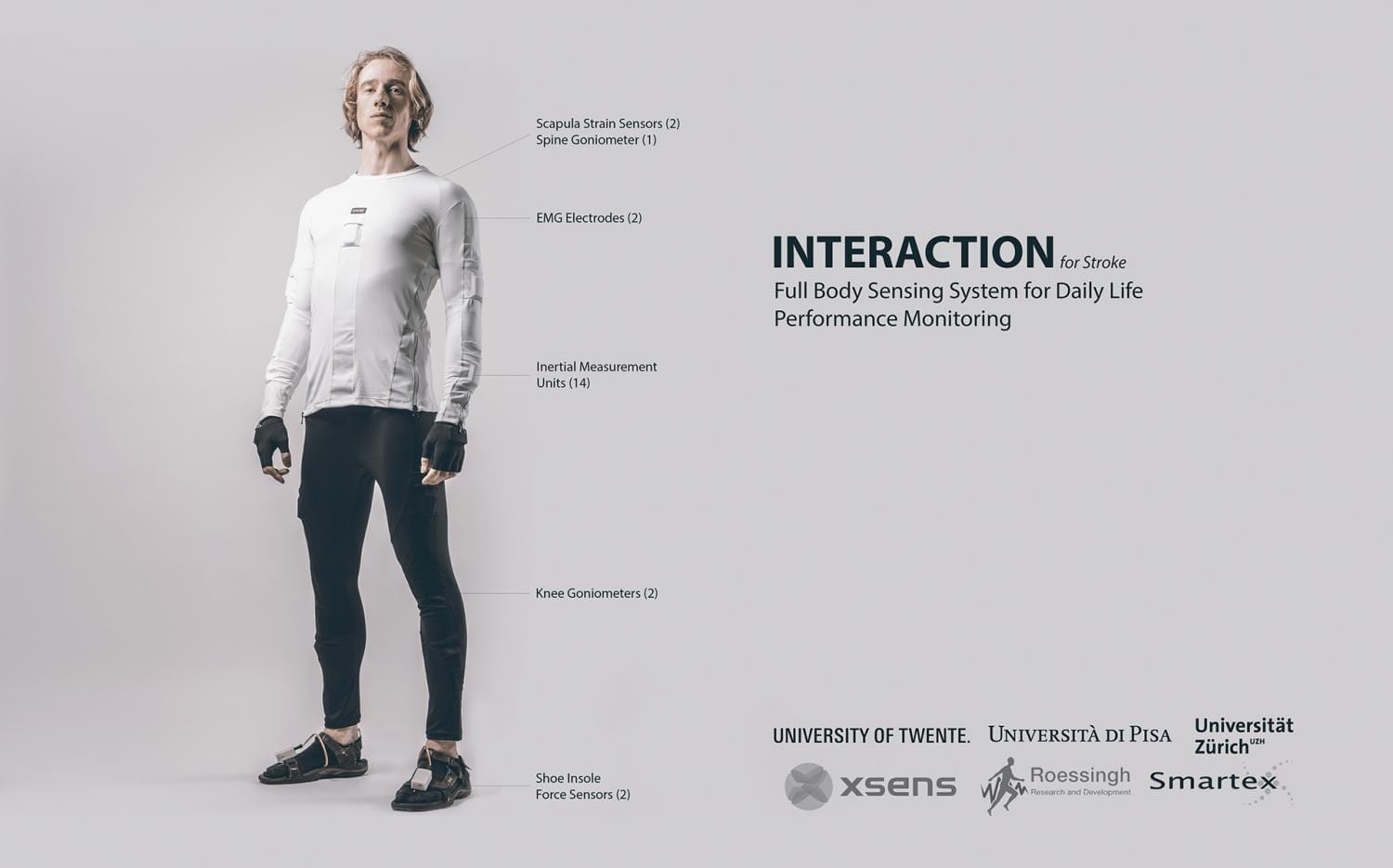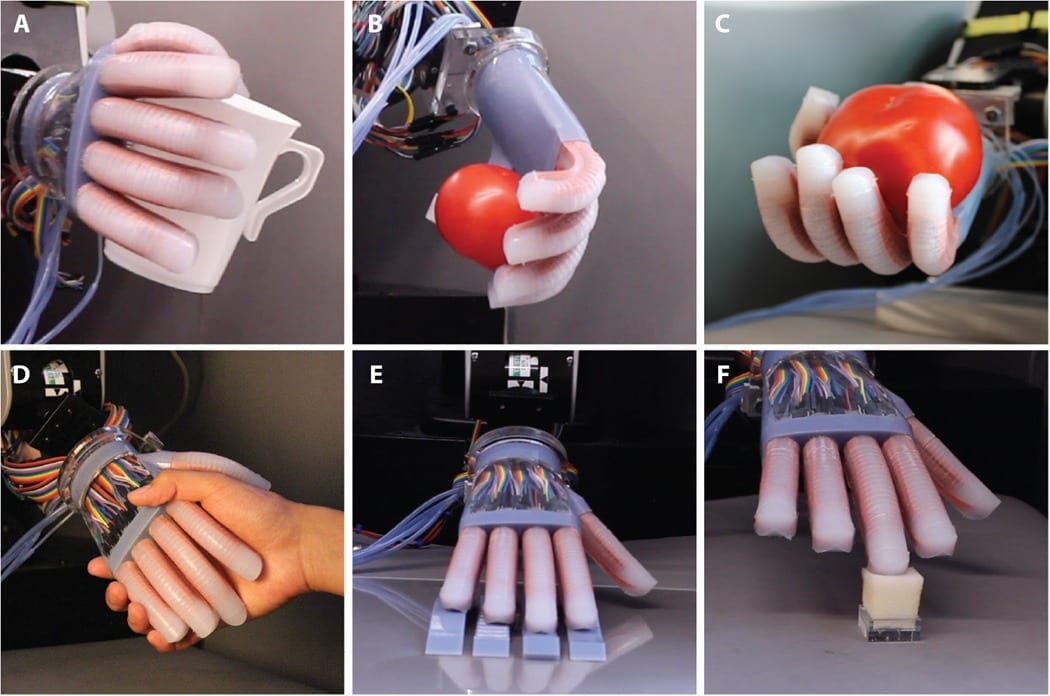
Working with the Korea Institute of Science and Technology (KAIST), NASA is pioneering the development of tiny spacecraft made from a single silicon chip that could slash interstellar exploration times.
On Wednesday at the International Electron Devices Meeting in San Francisco, NASA’s Dong-Il Moon will present new technology aimed at ensuring such spacecraft survive the intense radiation they’ll encounter on their journey.
If a silicon chip were used as a spacecraft, calculations suggest that it could travel at one-fifth of the speed of light and reach the nearest stars in just 20 years. That’s one hundred times faster than a conventional spacecraft can offer.
Twenty years in space is still too long for an ordinary silicon chip, because in addition to the frailties it suffers on earth, such as swings in temperature, it is bombarded by radiation of very high energy. This radiation leads to the accumulation of positively charged defects in the chip’s silicon dioxide layer, where they degrade device performance. The most serious of the impairments is an increase in the current that leaks through a transistor when it is supposed to be turned off, according to Yang-Kyu Choi, leader of the team at KAIST, where the work was done. However, there are also other issues, such as a shift in the voltage at which the transistor turns on.
Two options for addressing chip damage are to select a path through space that minimizes radiation exposure and to add shielding. But the former leads to longer missions and constrains exploration, and the latter adds weight and nullifies the advantage of using a miniaturized craft. A far better approach, argues Moon, is to let the devices suffer damage but then to add a an extra contact to the transistors, and use this contact to heal the devices with heating.
“On-chip healing has been around for many, many years,” says Jin-Woo Han, a member of the NASA team. Milestones including the revelation in the 1990s— by a team at the National Microelectronics Research Centre in Cork, Ireland— that heating could drive the recovery of radiation sensors, and far more recently, heat-induced healing of flash memory by Macronix of Taiwan. The critical addition made now, Han says, is the most comprehensive analysis on radiation damage.
This study uses KAIST’s experimental “gate-all-around” nanowire transistor. Gate-all-around nanowire transistors use nanoscale wires as the transistor channel instead of today’s fin-shaped channels. The gate, the electrode that turns on or off the flow of charge through the channel, completely surrounds the nanowire. Adding an extra contact to the gate allows you to pass current through it. That current heats the gate and the channel it surrounds, fixing any radiation-induced defects.
Nanowire transistors are ideal for space, according to KAIST, because they have a relatively high degree of immunity to cosmic rays and because they are very small, with dimensions in the tens of nanometers. “The typical size for [transistor-dimensions on] chips devoted to spacecraft applications is about 500 nanometers,” says Choi. “If you can replace 500 nanometer feature sizes with 20 nanometers feature sizes, the chip size and weight can be reduced.” Costs fall too.
The gate-all-around device may not be that well known today, but production is expected to rocket in the early 2020s, when silicon foundries will use it in place of the today’s FinFET for producing circuits featuring transistors with gate lengths smaller than 5-nm.
KAIST’s has been used to form three key building blocks for a single-chip spacecraft: a microprocessor, a DRAM memory for supporting this, and a flash memory that can serve as a hard disk.
Repairs to radiation-induced damage can be made many times, with experiments showing that flash memory can be recovered up to around 10,000 times and DRAM returned to its pristine state 1012 times. With logic devices, an even higher figure is expected. These results indicate that a lengthy interstellar space mission could take place, with the chip powered down every few years, heated internally to recover its performance, and then brought back to life.
Adding a second gate for heating is not ideal, because it modifies chip design and demands the creation of a new transistor library, which escalates production costs. To address this, those at KAIST are investigating the capability of a junctionless transistor that heats the channel during normal operation when current flows through it. Separately, at NASA researchers are developing on-chip embedded microheaters that are compatible with standard circuits.
Cutting the costs of self-healing tech is critical to the future of the program. It will help to increase the appeal of the technology, which will require many more years of investment if the launch of the first silicon-chip spacecraft is to get off the ground.
Learn more: Self-Healing Transistors for Chip-Scale Starships
[osd_subscribe categories=’silicon-chip-starships’ placeholder=’Email Address’ button_text=’Subscribe Now for any new posts on the topic “SILICON CHIP STARSHIPS”‘]
Receive an email update when we add a new SILICON CHIP STARSHIPS article.
The Latest on: Silicon chip starships
[google_news title=”” keyword=”Silicon chip starships” num_posts=”10″ blurb_length=”0″ show_thumb=”left”]
via Google News
The Latest on: Silicon chip starships
- Chip parts supplier Siltronic's profit falls on high client inventorieson May 1, 2024 at 10:59 pm
German chip equipment supplier Siltronic reported a 27.5% drop in first-quarter core profit on Thursday, a week after it slashed annual targets due to customers' still high inventories.
- Chip Giants Finalize Specs Baking Security Into Siliconon April 26, 2024 at 1:54 pm
A consortium of top chip makers have finalized the first version of Caliptra, a specification to add zero-trust security features directly inside silicon. The Caliptra 1.0 specification has hardware ...
- Opening up the potential of thin-film electronics for flexible chip designon April 24, 2024 at 8:04 am
The mass production of conventional silicon chips relies on a successful business model with large ‘semiconductor fabrication plants’ or ‘foundries’. New research by KU Leuven and imec ...
- Apple Silicon: The Complete Guideon April 22, 2024 at 5:03 am
Apple introduced the first Apple silicon Macs back in 2020, marking the start of its transition away from Intel's chips. Apple's custom chips are Arm-based and are similar to the A-series chips ...
- The 10 Largest Semiconductor Companies of 2024on March 27, 2024 at 6:42 am
Silicon chips are the brains behind nearly every type of modern computing device we now rely on to run our everyday lives. The terms "chip", "semiconductors", and even"integrated circuits"are ...
- This ‘unpatchable’ Mac flaw is keeping me up at nighton March 24, 2024 at 5:00 pm
That point has just been proven by researchers who say they’ve discovered a major new vulnerability in any Mac that runs on an Apple silicon chip, according to a report from Ars Technica.
- Towards fabless silicon photonicson February 19, 2024 at 8:43 am
Silicon photonic devices can be built using commercial CMOS chip fabrication facilities, or 'fabs'. However, nearly all research groups continue to design, build and test chips internally ...
- Could AI-Powered Silicon Remastering Be A Solution To The Chip Shortage?on March 1, 2022 at 9:31 am
Opinions expressed by Forbes Contributors are their own. I cover break-out tech in mobile, on desktop and in the data center. The process of designing and verifying chips like the modern ...
- Apple Siliconon December 12, 2020 at 3:51 pm
Following more than a decade of chip architecture experience gleaned from developing the A-series processors, Apple prepared the way for Apple Silicon on Mac with macOS Big Sur, Mac Catalyst ...
via Bing News











